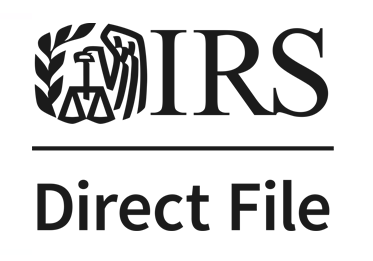Oh, IRS Direct File, we hardly know ye. Sadly, after just 2 years of being available to the public in a limited pilot, the IRS has officially killed their free tax-prep program, IRS Direct File. I previously gave an in-depth IRS Direct File review on what the program had to offer and also covered its expansion last year. While I had some frustrations about the program’s limitations, it received 98% satisfaction marks from users, so I was hoping to see it expand into a full-fledged competitor to private sector tax prep offerings in the years ahead. At least for now, that won’t be happening, so I wanted to cover why this happened and provide some alternative tax filing options.
The History of IRS Direct File
Here’s the brief historic timeline of IRS Direct File:
- August, 2022: IRS Direct File was created through a provision in the Inflation Reduction Act.
- March, 2024: IRS Direct File launches to taxpayers in 12 states. 141,000 taxpayers file using the program in 2024.
- January, 2025: IRS Direct File expands to taxpayers in 13 more states (25 total). Nearly 300,000 taxpayers file using the program in 2025.
- July, 2025: the OBBBA legislation includes appropriations for the IRS to research the replacement of IRS Direct File.
- November, 2025: IRS official sends a memo to states declaring that “IRS Direct File will not be available in Filing Season 2026. No launch date has been set for the future.”.
Why was IRS Direct File Killed?
IRS and Treasury Department officials have stated that they were ending IRS Direct File because only a small percentage of total taxpayers had used the program to file their tax returns. While that may be true (for reasons I’ll highlight below), it’s hard to imagine that politics, including fierce tax prep industry opposition to the program, didn’t have a strong impact in the decision.
IRS Direct File was Plagued by Limitations
Even after its 2025 expansion to 25 states, IRS Direct File still had a number of limitations that I have highlighted previously. Taxpayers with the following scenarios were not able to file with the software:
- Individuals who itemize deductions.
- Individuals with income sources not explicitly stated as covered, including gig economy, rental or business income.
- Individuals with unreported cash income, such as tips or alimony.
- Individuals with contributions to an IRA.
- Individuals with contributions or distributions to an MSA.
- Individuals who claim any credits other than those explicitly covered by the program.
- Maximum income eligibility limits: the program was only available to single filers with wages of $200,000 or less in 2024 ($168,600 for individuals with more than 1 employer). Married couples filing jointly are eligible if their income was $250,000 or less in 2024 ($125,000 for married couples filing separately).
One of the biggest limitations with Direct File was that it lacked state tax filing integration. Direct File only covered your federal tax filing, while 43 states required state income tax filing. State return filers were required to re-enter all of their tax information for state returns. Only a handful of those 43 states offered some level of state filing integration with Direct File to prevent that.
How IRS Direct File Could Have Survived (and Thrived)
Had IRS Direct File used 2024 as a pilot but then fully expanded to every state and reduced the aforementioned limitations in 2025, I think there was a chance that its usage would have been such that it would have been hard to kill. Realistically, that would have required full IRS buy-in under a new administration, and an advertising/awareness campaign. It received neither.
IRS Direct File never really had a chance to succeed with the change in administrations and their priorities. The lesson for any future administration that may want to revive it is to expand as rapidly as possible and go all-in from the start for rapid adoption. I just hope that the work that was put in to its development is saved and the program (or, a future iteration of it) gets a legit shot to succeed at some point.
IRS Direct File Alternatives
If you are looking for free alternatives to IRS Direct File, check out my best tax prep programs review and cheapest ways to e-file articles. In them, you’ll find a number of ways to file your taxes for free and get discounts for paid premium versions of all of the top tax prep programs. I’ll be updating those lists throughout the upcoming tax season. A shortlist of the main alternatives are:
- 3rd Party Tax Prep Software: free or premium paid versions of H&R Block, TurboTax, TaxSlayer, TaxAct, Cash App Taxes, FreeTaxUSA, etc.
- FreeFile/FreeFillableForms: free tax prep options for those with basic returns, in certain states, with low income levels.
- MilTax: free tax prep software for active military and veterans.
Also, you can check out my DIY tax filing guide for some basics on how to do your own taxes.

